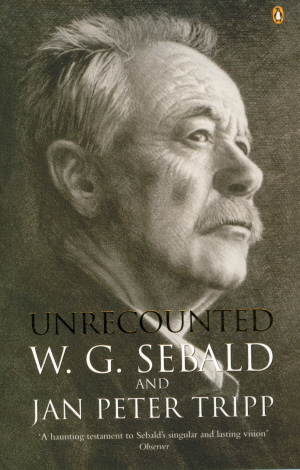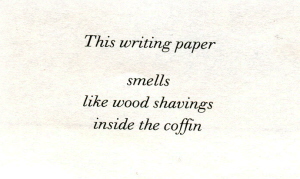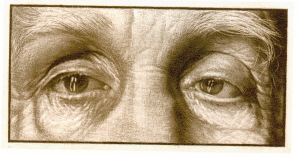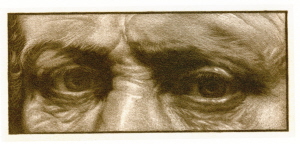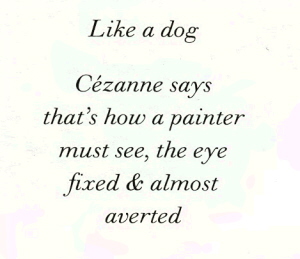
|
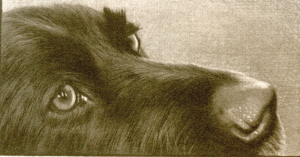
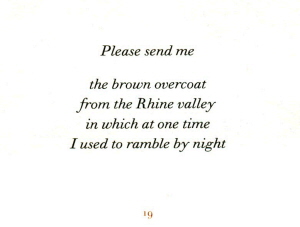
Người ghi chú cô đơn: The Solitary Notetaker. Khi W.G. Sebald mất vì tai nạn xe hơi vào Tháng
Chạp 2001, ông được tưởng niệm, như là một trong những nhà văn lớn lao của
thời chúng ta. Tuy nhiên, khi cuốn đầu của ông, Di Dân, được dịch ra tiếng
Anh vào năm 1996, rất ít người bên ngoài nước Đức biết đến ông. Nhưng liền
sau đó, ông được đón đọc, tác phẩm liên tiếp được dịch, lẹ làng, đến mức
kinh ngạc.
Susan Sontag đã từng tự hỏi, trên tờ TLS, liệu "văn chương lớn" có còn không, và bà tự trả lời, còn chứ, Sebald đó. Tuy nhiên, kể từ khi ông mất, có nhiều cái nhìn khác nhau về ông. Lớn lao, số một, giọng không giống ai, vẫn đúng đấy, nhưng đọc kỹ hơn, gần hơn, nghe ra có nhiều vay mượn. Tác phẩm của ông, có thể nói, một nửa là do uyên bác, nửa còn lại, là tưởng tượng và kinh nghiệm của riêng ông. Nếu có một nhà văn vay mượn rất nhiều từ những nhà văn khác, nhưng vẫn là một thứ đồ zin, đồ xịn, nếu có, thì đúng là Sebald. Charles Simic, trên NYRB điểm hai cuốn mới nhất của ông, Campo Santo, một thứ tiểu luận, và Unrecounted, gồm 33 bài thơ nho nhỏ, của ông, và 33 bức họa, của Jan Peter Tripp. Họa: Mỗi bức là một đôi mắt, với sự chính xác, của hình chụp: Proust, Rembrandt, Beckett, Borges... Chủ đề của họa: Miệng thì tốt, để nói dối, trong khi mắt, khó nói dối. Bất cứ mắt đang mơ mộng, hay suy tư, chúng đều vọng một tí ti sự thực, nào đó. Dưới mỗi đôi mắt, là một bài thơ mini. Thí dụ, dưới cặp mắt của Maurice, chú chó của Sebald, là: Please send
me Thơ của ông thực sự cũng khó mà gọi là thơ. Như
nhà phê bình Andrea Kohler chỉ ra, đó không phải là ngụ ngôn, mà cũng chẳng
phải thơ. Chỉ là những cú xổng chuồng, thoáng chốc, của tư tưởng, của hồi
nhớ, những khoảnh khắc loé sáng, ở mép bờ của cảm nhận.
Và đây là một bài thơ mini thật thú vị: Người ta
nói, Họa: Mỗi bức là một đôi mắt, với
sự chính xác, của hình chụp: Proust, Rembrandt, Beckett, Borges... 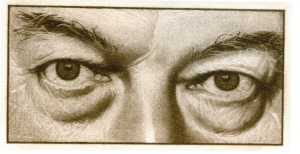
* Borges
Rembrandt
Thơ của ông thực sự cũng khó mà gọi
là thơ. Như nhà phê bình Andrea Kohler chỉ ra, đó không phải là ngụ ngôn,
mà cũng chẳng phải thơ. Chỉ là những cú xổng chuồng, thoáng chốc, của tư
tưởng, của hồi nhớ, những khoảnh khắc loé sáng, ở mép bờ của cảm nhận. L'EMPIRE DES
SIGNES (1970) was written after Barthes's visit to (1) 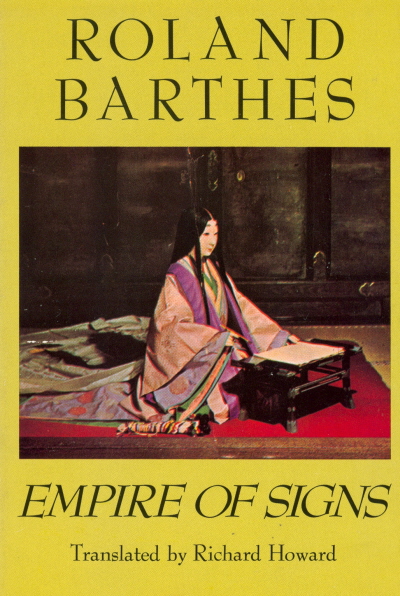
"If Japan did not exist, Barthes would have had
to invent it - not that Japan does exist in Empire of Signs, for Barthes
is careful to point out that he is not analyzing the real Japan but rather
one of his own devising. In this fictive Japan, there is no terrible innerness
as in the West, no soul, no God, no fate, no ego, no grandeur, no metaphysics,
no 'promotional fever' and finally no meaning ... For Barthes Japan is a
test, a challenge to think the unthinkable, a place where meaning is finally
banished.
The Observer The eyes have it Nearly three years on from his death, WG Sebald has become a huge cult figure. His last book, a collaboration with the German artist Jan Peter Tripp, is a haunting testament to his singular and lasting vision Tim Adams Sunday 19 September 2004 01.10 BST At the end of the opening story of The Emigrants , the first of his books to be published in this country, WG Sebald wrote a line that was something of a statement of intent: 'And so they are always returning to us, the dead.' In his case, that observation is proving true. Nearly three years after the car crash that ended his life at the age of 57, new books by Sebald continue to emerge. The latest, Unrecounted, the result of a long collaboration with a childhood friend, German artist Jan Peter Tripp, is suitably haunting. It has often been said that, in his brief, marvellous career, Sebald, writing from East Anglia, invented a genre all his own. The substance of that originality was a new way of looking at what remains of long-gone objects, people and events. All his books were imaginative exhumations, but they were given a curious urgency by his inspired and restless intelligence. His writing made the dead seem like news. In Austerlitz, the most profound statement of this method, Sebald wrote of his sense that the dead were more real than the living. It was the belief of his hero, Austerlitz, who had escaped the Holocaust on a kindertransport, that 'time did not exist at all, only various spaces interlocking according to the rules of a higher form of stereometry, between which the living and the dead can move back and forth as they like, and the longer I think about it the more it seems to me that we who are still alive are unreal in the eyes of the dead, that only occasionally, in certain lights and atmospheric conditions, do we appear in their field of vision'. It was something like this sense that attracted Sebald to the work of Jan Peter Tripp. They shared a past - they both grew up in Bavaria just after the war - that understood a good deal about destruction and loss. (Until he was in his teens, Sebald believed that all cities were ruins.) On his frequent trips to the Continent, Sebald visited the artist in Alsace and encountered something of the same sense of absence and dislocation he felt in himself. On some of these visits, they developed an idea that they would make a book together exploring the places where their vision overlapped. Sebald described Tripp's work as taking realism to 'an almost unimaginable extreme'. For the book they planned, the artist took and found photographs of the eyes of a number of people they both knew or admired and made disconcertingly exact etchings and lithographs from them. At a glance, you imagine these eyes to be photographs and, when you are realise they are not, you stare at them as if in search of a clue to their composition. They seem both unreal and more than real; they have a life of their own. In an essay about Tripp's work, Sebald talked of 'the role of the observer and the observed objects being reversed. Looking, the painter relinquishes our too-facile knowingness; unrelatedly, things look across to us.' Michael Krüger, the German publisher of Sebald, remembers the pair of them coming into his office to propose the idea for their book, two schoolfriends, excitedly explaining a project. 'Max [Sebald] talked a lot about looking, about the little pieces he would write about looking. Some of the pieces would be old, some new, but they would all be about the way we viewed the world.' While Sebald was talking, Tripp stood up and started taking photographs of Krüger. 'We will, of course, have to include your eyes in the book, too,' he explained. Tripp's subsequent etching of the publisher's eyes carries with it a typical fragment of Sebald's verse, what he called a 'micropoem': 'They say / that Napoleon / was colourblind / & blood for him / as green as / grass.' When Sebald died, Tripp put the 33 images he had made together with Sebald's haikus. The eyes that stare at you from their letterbox frames are, thus, like memorial stones to a curious friendship. They include writers and painters they had discussed - William Burroughs and Francis Bacon, Rembrandt and Truman Capote - as well as family and mutual friends, like Krüger. The result is a primer for Sebald's other work, which was always concerned with the befores and afters of photographs, the way writing revives the life that the still image has frozen. In The Emigrants, he likened this to a fascination with the traces skaters leave behind in the afternoon sun. In the last interview before his car crash, just as he was finalising the translation of Unrecounted, Sebald pointed to a small boy in an old family photograph on his office wall and explained how the boy 'returned from the First World War mentally disturbed after electric shock therapy. This is before he knew. I find that frightful: the incapacity to know what's round the corner.' The most powerful of the pictures in Unrecounted, in this respect, is that of Anna Sebald, the writer's daughter, who was in the car with her father when he died, and who suffered severe injuries. Tripp's etching, made before the accident, seems now to carry all the horror of the moment that was to come. The knowledge of what was around the corner. Eyes which once might have looked innocent, or hopeful, are now freighted with unimaginable hurt. In life, Sebald was obsessed by this temporal property of pictures. 'It was,' says Michael Krüger, 'a strange thing to wander in a city with Max, in that he always had his camera to hand. He would sometimes stop every few paces and take a picture. Always trying to capture and preserve something he had seen.' Susan Sontag, who described Sebald as 'the contemporary master of the literature of lament and mental restlessness', has suggested to Krüger that the hundreds of thousands of archived photographs Sebald left behind be edited into a book, a lasting memorial to his vision, his way of seeing. Krüger says that Unrecounted might be seen as a kind of brief prologue to that work, but that collating the photographs - undated and uncaptioned - will be a monumental task. 'Some of them are easier, like when he was walking in Suffolk for his book, The Rings of Saturn. For most, though, you have absolutely no idea where you are, what you are seeing, except that you know this thing was once important to Max.' All great writers invite you to see the world through their eyes but few have offered such an indelible vision as Sebald. Tripp's last etchings in the book are, appropriately, two pictures he made of Sebald's eyes, now looking back from across the divide of death, along with another little fragment from the writer: 'At the end / only so many will / remain as / can sit round / a drum.' Sebald would, no doubt, have enjoyed the symmetry of this, since his literary career began with much the same vision. His first prose poem, After Nature , written in 1988, begins with him opening the casing of the Isenheim altarpiece and gazing at the face of Grünewald, the Renaissance artist, who, Sebald believes, included self-portraiture in his work. Sebald describes the artist's face as follows: 'Always the same / gentleness, the same burden of grief, / the same irregularity of the eyes, veiled / and sliding sideways down into loneliness.' The description, for anyone who has looked at Sebald's expression, leads you directly back to the author. In his introduction to Unrecounted, translator and poet Michael Hamburger, whose eyes also look out from one of Tripp's etchings, describes how, for Sebald, 'memory [was] a darkroom for the development of fictions'. In discussing the associations that a picture could assemble for Sebald, Hamburger writes of the way our looking always carries with it 'personal culture' which 'is the deposit of what has passed through our heads and our hearts'. When you look at Tripp's picture of Sebald's gaze, it is impossible not to see some of this sediment of memory in his eyes. You can see, perhaps, the little boy whose father, a captain in the German army, returned home from a prisoner-of-war camp in 1947 and, thereafter, hardly spoke to his son. You can see, maybe, the young man adrift in Manchester as a German lecturer, walking along the derelict canals, reading the works of Paracelsus in the university library, always in a 'sort of no-man's-land, behind the railway buildings, in a terrace of low houses ready for demolition'. You can see the university professor greatly amused by the foibles of bed- and-breakfast landladies in Suffolk. You can see the father whose daughter fretted that he would not carry a mobile phone: what if his unreliable car broke down and left him stranded in Thetford Forest? You can see the fastidiousness of the writer who, though he lived in England all his adult life, never wrote in English, fearing he might disturb the exactness of his German prose, but who would pore for hours over his translations, making changes and then, when inscribing copies of books for friends, would habitually add some further textual changes by hand. You can half-convince yourself that you can see just the hint of the bleakest smile at the manner of his death, on a featureless road near Norwich, when his car left the straight and narrow path of his lane and collided with the undeniable fact of an oncoming lorry. I once talked to that other great recoverer of memory, Iain Sinclair, whose books sift obsessively through London's forgotten histories in a manner Sebald would have admired. I asked him if they had ever met. He had seen Sebald once, he said, at the BBC. They had been in a lift together. Both were reserved and complicated men, and Sinclair was not sure that Sebald knew who he was, and so they did not speak. 'Still,' said Sinclair, 'I did catch his eye for a moment.' It was a look he has never forgotten.
|
